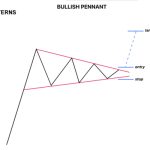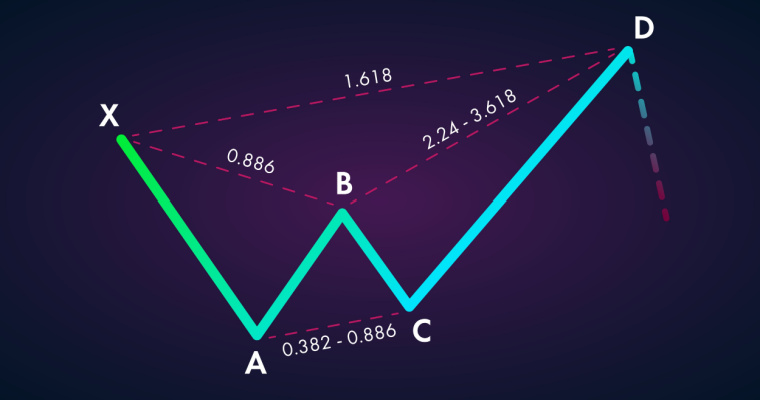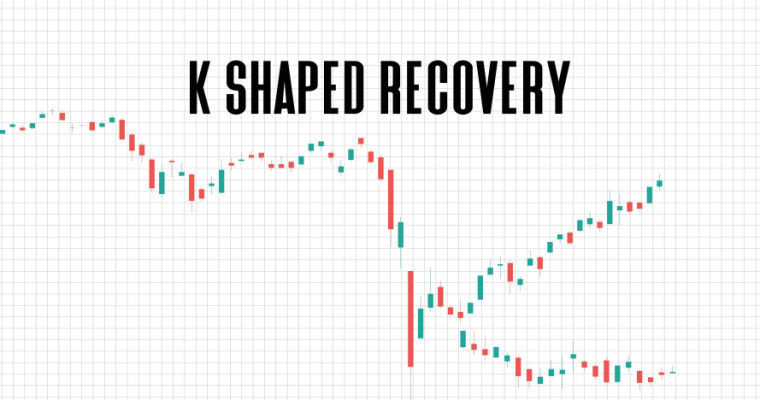What is Short Covering in Trading – Its Working, Use and How to Identify it

Short covering is a trading strategy in which investors short sell certain shares and later purchase them again, only to return them to stock brokerages. When this cycle of the transaction gets completed, the short position becomes covered. Investors opt for short selling due to a variety of reasons. It includes speculation that the price of an asset will decline in the future, and if it happens, they can buy shares at a lower price. If executed properly, it leads to profits for the trader.
This article helps you understand how short covering in trading works, how to identify it, its features and example. Read on to learn more about more intriguing aspects of this concept and how to use it.
How Does Short Covering Work?
Covering a short position is essential for traders to earn profits. If they keep their short positions open for a prolonged period, it will increase the risk of losses for them.
Short covering of stocks will be profitable only when traders purchase corresponding stocks at a lower price than the initial price of the transaction. A high degree of short covering occurring in stock may compel traders to liquidate their positions at relatively higher prices.
This will lead to severe losses for them as brokers invoke the margin calls. However, in some cases, individuals will opt for short covering due to high short interest and subsequent buy-in of a particular stock. This is mainly applicable to less liquid stocks with lesser shareholders.
What Are the Features of Short Covering?
Here are some features of short covering:
- Opportunity: The trader senses an opportunity to profit from prevailing market bearish tendencies. The bearish trader is hoping for a decline in the price of the underlying asset.
- Waiting Period: This is the time period in which one must wait for the price of the underlying asset to fall. It varies from one security to another and depends on larger trends in overall markets. They must wait for the right time to close their positions and earn profits.
- Short Covering: A trader must buy the same number of stocks that he/she borrowed from the brokerage for short sale transactions.
- Revenue: In case of short covering, a trader may expect some profits since movement in the price of security is as per his/her market expectations.
Why Does Short Covering Matter?
Short covering is essential for the successful completion of a short sale transaction. It becomes necessary for traders when there is a short squeeze, and they become vulnerable to margin calls.
Covering one’s position is an important part of the overall short-trading strategy. If one does not purchase an equal number of stocks to return to the brokers, it might expose them to the risk of unlimited losses. It means a corresponding rise in the price of an underlying asset will increase the quantum of losses as well.
Also Read
How to Identify Short Covering?
Here are some factors that will help you identify short covering in share markets:
- A decrease in the open interest – It measures money flow in a particular stock or futures and options. A fall in the liquidity or flow of money in a stock indicates short covering.
- A rise in the price of the underlying security – Whenever there is an abnormal increase in the price of the underlying security, it may indicate that the respective stock is undergoing short covering.
What is an Example of Short Covering?
Let’s consider an example of short covering in stock markets, as this will give more clarity to individuals about this process.
Suppose the stock of Company ABC is trading at Rs.275. However, a trader Mr.Ahuja believes that the price of this stock will fall in the near future for various reasons. So he shorts this stock by borrowing it from his broker.
After some time, his prediction came right, and there was a fall in the stock price of Company ABC, and it is now trading at Rs.265. Sensing an opportunity for profit, Mr. Ahuja purchases the shares at a reduced price and returns them to the broker from whom he had borrowed for a short sale transaction.
Therefore, we can see that he makes a profit of Rs.10 per share when he covers or completes his short position. A short covering will lead to a marginal rise in the price of the said stock as it experiences heavy buying.
How Can Short Covering Cause Short Squeeze?
Short squeeze in stock markets is in great demand for stocks with lower supply levels. It leads to a sudden increase in the price of stock beyond the expected levels. Then the stock lender demands back his security which is trading at very high levels.
This compels traders to purchase securities, and such buying pressures lead to further increases in the price of these securities. In some cases, these securities may also break their upper circuit and trade at record highs.
A short squeeze is mainly common in stocks or assets which comes with higher interest costs.
How Does Short Covering Affect Stock Price?
Traders want to close their position by indulging in short covering of stocks. However, these stocks are suffering from low supply, and the resultant excess demand will shoot up the price of underlying stocks.
Simple demand and supply reasoning is responsible for short squeeze or an unexpected rise in price levels. In the course of closing their positions, short-term traders push up the price of respective stocks.
Other short traders become nervous by seeing such an increase in stock prices with no fundamental basis. This leads to more short traders covering their position and higher demand for such stocks. As a result, this further drives up the price of stocks. However, as supply normalises over time, the stock moves towards its fundamental value.
Also Read
What is the Difference between Short Covering and Short Squeeze?
These are two different concepts pertaining to a short position in markets – short covering and short squeeze. Short covering means purchasing a security or stock in order to close an open short position. Investors need to purchase the same number of stocks they borrowed from brokers for short-sale transactions.
On the other hand, a short squeeze means an unprecedented demand for stocks among short sellers due to an unexpected increase in its price. There is great demand for these stocks as short traders want to close out their position as quickly as possible and avert further losses.
Final Word
Short covering is an essential component of the overall short trading strategy. It entails buying stocks or securities to return the same to brokers from whom you had borrowed them initially for short selling. In addition to helping investors profit on the decline of a stock, it also allows investors to make money on overvalued stocks.
FAQs
Ans: It implies the number of shares sold short in the market, which remains outstanding. Individuals indulge in short selling when they think that the price of the underlying asset will fall in the near future.
Ans: It is the ratio of the number of shares sold short to the average trading volume of that particular stock. This ratio helps us determine whether a stock is shorted or not with respect to its average daily trading volumes.
Ans: There is no predefined rule that mentions a timeline within which one should close their short position. However, one should keep track of the market and price of the stock and try to close their position as quickly as possible in case of an uptrend.
Ans: Yes, it is completely legal in India. The Securities and Exchange Board of India has lifted most of the restrictions that were in place on short selling. However, it is imperative for investors to honour their delivery timelines.
Want to put your savings into action and kick-start your investment journey 💸 But don’t have time to do research? Invest now with Navi Nifty 50 Index Fund, sit back, and earn from the top 50 companies.
Disclaimer: Mutual Fund investments are subject to market risks, read all scheme-related documents carefully.
This article has been prepared on the basis of internal data, publicly available information and other sources believed to be reliable. The information contained in this article is for general purposes only and not a complete disclosure of every material fact. It should not be construed as investment advice to any party. The article does not warrant the completeness or accuracy of the information and disclaims all liabilities, losses and damages arising out of the use of this information. Readers shall be fully liable/responsible for any decision taken on the basis of this article.

Customer’s Feedback
No comments found.Illiquid Stocks Guide: Definition, Examples, and its Working
Illiquid stocks are part of a long-term investment strategy that is appropriate for investors who a... Read More »What is Shooting Star Candlestick Pattern in Trading?
The shooting star candlestick pattern is considered to be a bearish reversal candlestick ... Read More »What is VWAP Indicator and How to Use it for Trading
The VWAP indicator shows the volume-weighted average market price of a particular stock. You can us... Read More »What is Price Action Trading: Its Strategy, Stop Loss and Profit Targets
Price action trading is a methodology in which the trader solely relies on analysing a security’s... Read More »What is Buy the Dip Strategy in Trading – Working and Example
‘Buy the dip’ is one of the most common phrases in the stock market. It is sort of a go-t... Read More »What is the Black Scholes Model – Formula, Calculation and Assumptions
Among the important concepts in modern financial theory, the Black Scholes model, developed in 1973... Read More »What is Iron Condor and What are its Strategies?
Iron Condor is an options trading strategy that involves four options with the same expiration date... Read More »What is Harmonic Pattern and How Does it Help in Trading?
Harmonic patterns are one of the most efficient and effective trading patterns. Although they are m... Read More »What is a Contract Note and Why is it Important?
Contract note is a legal document containing the details of every stockbroker's trade on a stock ex... Read More »What is K-shaped Recovery: Indication, Example and
Economies go through multiple phases in business cycles. One such phase is a recession which is mar... Read More »Guide to Book Building – Its Types, Benefits and Process
Initial public offerings (IPOs) are priced as specified by their underwriters. The process by which... Read More »Support and Resistance in Trading: Working, Strategies, Uses and Example
Support and resistance are two of the most significant and practical concepts in technical analysis... Read More »Top 10 Chit Fund Schemes in India in 2023
Chit funds are one of the most popular return-generating saving schemes in India. It is a financial... Read More »10 Best Gold ETFs in India to Invest in April 2023
Gold ETFs or Gold Exchange Traded Funds are passively managed funds that track the price of physica... Read More »10 Best Demat Accounts in India for Beginners in 2023
Creation of Demat accounts revolutionised the way trades were conducted at the stock exchanges. It... Read More »20 Best Index Funds to Invest in India in April 2023
What is an Index Fund? An index fund is a type of mutual fund or exchange-traded fund (ETF) that... Read More »Best Arbitrage Mutual Funds to Invest in India in April 2023
Arbitrage funds are hybrid mutual fund schemes that aim to make low-risk profits by buying and sell... Read More »10 Best SIP Plans in India to Invest in April 2023
What is SIP? SIP or Systematic Investment Plan is a method of investing a fixed amount in ... Read More »10 Best Corporate Bond Funds in India to Invest in April 2023
Corporate bond funds are debt funds that invest at least 80% of the investment corpus in companies ... Read More »10 Best Bank for Savings Account in India [Highest Interest Rate 2023]
Savings account is a type of financial instrument offered by several banks. It lets you safely depo... Read More »


































